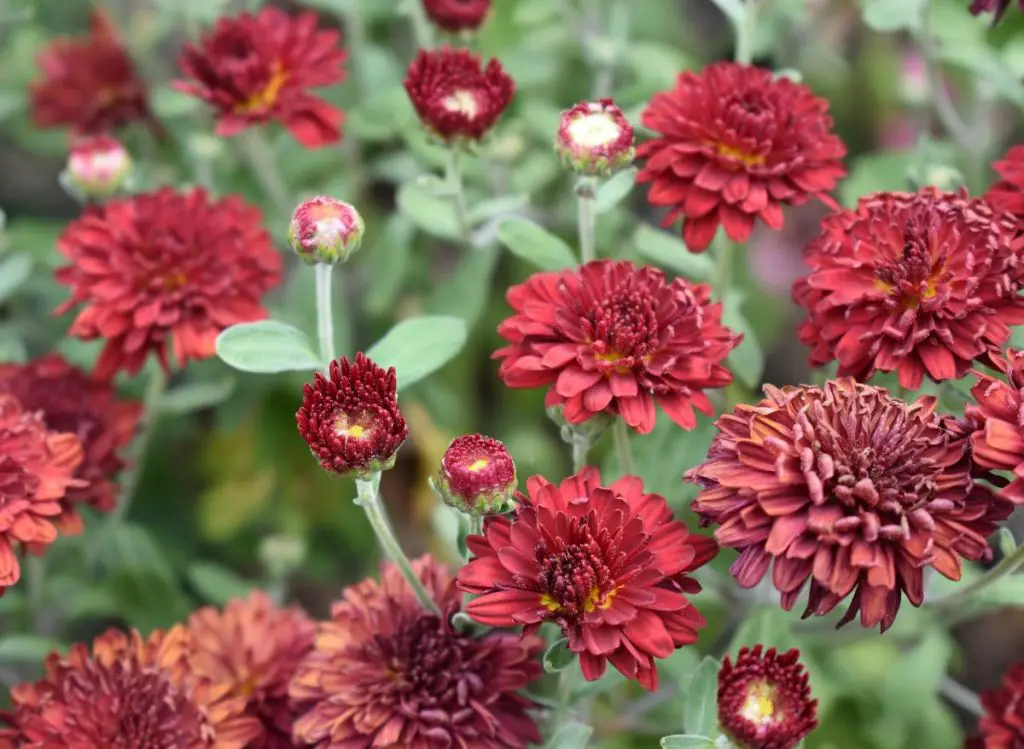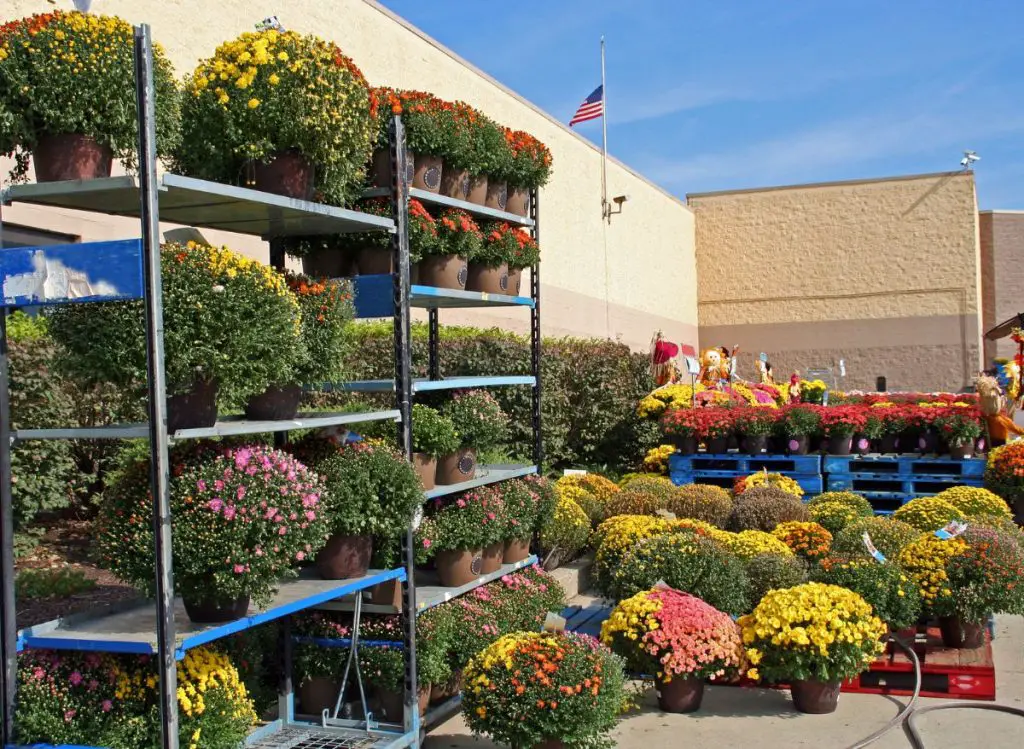
Mums, also known as chrysanthemums, are one of the most popular fall flowers. Their bright and bold colors add life to any garden and can create a stunning fall display. However, after they bloom, many gardeners wonder what to do with their mums. Can you plant them again next year? Is it too late to plant them after they’ve bloomed?
So, can you plant Mums after they bloom? After plant Mums bloom, you can remove the spent flowers and transplant them into a larger pot. I recommend you choose a larger container than the existing pot to give the roots space to expand. Generally, you can plant mum plans in containers and hanging baskets or stick them into the ground to fill gaps in your garden (Source: University of New Hampshire)
Read on to find out some essential tips on how to care for your mums so they last longer properly. If you wonder whether frost will hurt your mums, I wrote a whole article that I encourage you to read.
Will Mums Come Back Every Year?
Mums are perennials, which means that they grow back every year (Source: University of Illinois Urbana-Champaign) After they bloom, the foliage will still be present, and it is important to keep this foliage healthy and growing. During this period, mums are storing energy in their roots to prepare for the following year. It is, therefore, not advisable to cut back the foliage immediately after flowering but to let nature take its course. The foliage will eventually die back naturally. Once this happens, it is time to prepare your plants for the coming winter.
Quick Tips to Encourage Mums to Come Back Every Year:
- Water them regularly, but do not overwater them.
- Mums prefer well-drained soil and do not tolerate standing water or constantly wet conditions.
- Fertilize the mums every four to six weeks with a balanced fertilizer such as a 10-10-10 or 12-12-12.
- Deadhead spent flowers to promote new growth and to ensure that your plants continue to produce blooms.
Best Time to Plant Mums
The best time to plant mums is in spring when new growth starts to emerge. If you are planting mums from pots, you should wait until the soil has thawed and warmed up, as this will provide the best opportunity for the roots to take hold.
However, you can still plant mums after they bloom, provided you do it a few weeks before your area’s first frost date. This will ensure that your plants have ample time to establish their roots before being subjected to harsh winter weather.
Before planting mums, ensure that the soil is well-drained and enriched with organic matter, and soil pH should be between 6.0 to 7.0. When planting, I encourage you to make sure that the crown of the plant is at soil level or slightly elevated but not buried, which will help prevent the plant from rotting during the winter months.
I suggest you water the mums thoroughly after planting and maintain the soil moist but not waterlogged until the plants become established.

Essential Tips on How to Care For Your Mums So They Last Longer Properly
Mums plants require proper care to ensure they produce beautiful blooms year after year. With proper care, your mums will provide you and your family with a beautiful display of colors and beauty. Mums require full sun and at least six hours of direct sunlight per day.
Here are a few tips on how to care for your mums to make them last longer:
- Cut Back Dead Blooms: After your mum has finished blooming, the first step is to cut back all of the dead blooms and fading foliage. This process is known as deadheading. Deadheading stimulates the mum to produce additional blooms and encourages a fuller and more compact plant. Be sure to remove all of the fading blooms, as leaving them on the plant can encourage disease.
- Prepare the Soil: Once you’ve deadheaded your mum, prepare the soil for planting. Mums prefer well-draining soil that is slightly acidic. If your soil is not ideal, you may need to amend it by adding compost or peat moss. It’s also important to ensure that the planting location receives at least six hours of direct sunlight each day.
- Planting: Once your soil is prepared, it’s time to plant your mum. Dig a hole that is slightly larger than the root ball of your mum. Then, I suggest you gently remove the mum plant from its container and loosen any tangled roots. Place the mum in the hole and backfill it with soil. Be sure to water your mums plants thoroughly after planting.
- Fertilizing: Mums are heavy feeders and require regular fertilization. Fertilize your mum every two weeks with a balanced fertilizer until late summer. After late summer, stop fertilizing to allow the plant to prepare for winter.
- Winter Care: In colder climates, mums may not survive the winter. To give your mum the best chance of survival, mulch around the plant with a layer of straw or pine needles in the fall. This helps to insulate the roots and protect them from extreme cold. In the spring, remove the mulch and cut back any dead foliage.
What to read next:
- Can You Really Plant Mums In The Ground: A helpful guide!)
- Are Mums Indoor Or Outdoor Plants? (With Examples Types Of Mums!)
- Are Belgian Mums Annual or Perennial? (Let’s find out!)
Wrapping Up
Mums are a beautiful and attractive addition to any garden. It is possible to plant mums after they bloom, provided you do it at the right time and follow the proper planting procedures.
By following the essential tips I outlined in this article, you can successfully plant your mums after they bloom and enjoy their vibrant colors for years to come. Also, remember, mums are hardy perennials that can bloom year after year if properly cared for.

